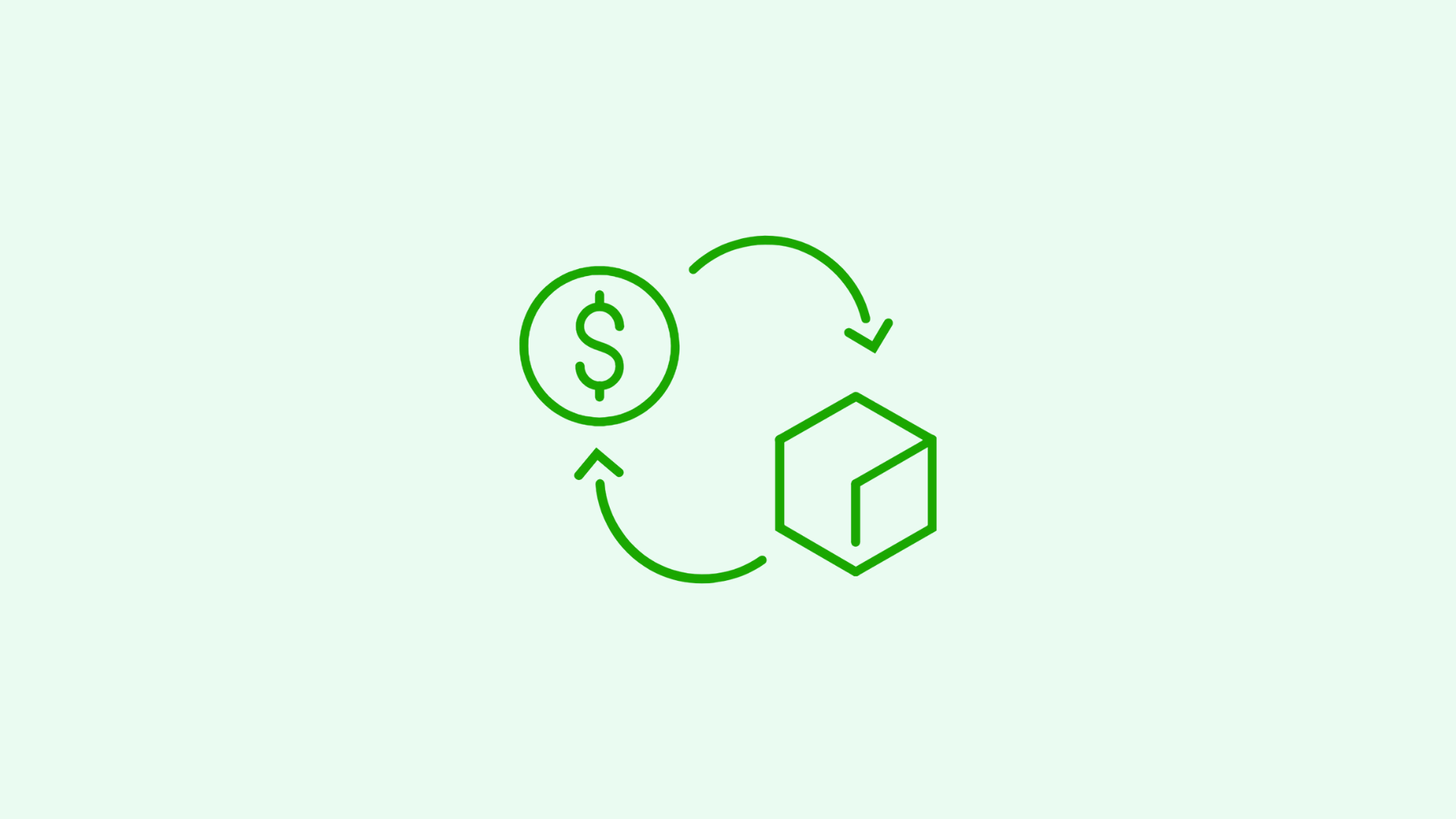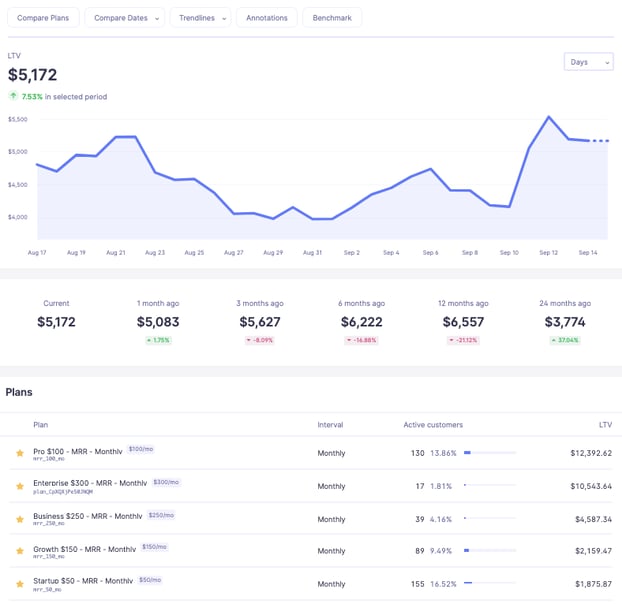Table of Contents

Most businesses are aware their customers go through different phases before they reach a decision. Very broadly, these phases are known as the Purchase cycle. This article will dive into what a purchase cycle is and how to use this understanding to your advantage.
Understanding how your customers make a purchase and coordinating your marketing, pricing, and sales efforts accordingly can be the key to accelerating your conversion rate (and driving costs down).
If you want to get better analysis on your purchase cycles, Baremetrics has several analysis tools you can implement across the entire purchase cycle to close more deals.
What Is a Purchase Cycle? (And How Does It Differ From a Sales Cycle?)
Your purchasing cycle (sometimes called the procurement cycle or procure-to-pay cycle) is the process a customer goes through to order, obtain and pay for your services to meet their needs.
There is a subtle but significant difference between a purchase and a sales cycle, mainly for companies operating in a complex or competitive sales environment.
Your Sales Cycle is the company’s approach to move deals or prospective customers through your internal pipeline and process to close the sale. The flow might start by looking at a lead, qualifying a lead for marketing, qualifying the lead for sales, conducting a need analysis, submitting a pitch or proposal, negotiating, and closing.
You could say that the sales cycle looks at the sale from the company’s perspective and your purchase cycle looks at the sales process from the customer’s perspective. The purchase or buying cycle looks at everything a customer needs to know at every step of their journey to make a purchase decision.
The customer may start by acknowledging they are not satisfied and start looking for solutions online. They start evaluating different companies based on what they’ve found and eventually settle on a provider.
The purchasing cycle is marketing-and-sales-led, whereas the sales cycle is focused on internal processes.
Companies must understand both the sales cycle and the purchase cycle to close deals faster.
Why Purchase Cycles Matter
Even a highly successful business doesn’t convert every single prospect they are trying to win over. Some prospects drag their feet for years; others will never make a purchase, or instead they’ll sign on with a competitor.
While we won’t avoid customers dropping from the sales funnel altogether, we can try to understand their motivation for closing or not closing and use our marketing and sales teams to improve our chances of closing the loop. Taking a step back and evaluating your communication and your product and service from the customers’ perspective is an invaluable exercise for any organization.
1. Optimize Your Marketing Efforts
Are you driving a lot of qualified traffic, but those leads never pan out? Tweaking your communication or driving traffic to a page with a hard-selling message can change everything! Traffic to your webpage is likely in the consideration phase, with prospects not entirely convinced you can solve their needs.
Alternatively, you might find that your site converts every single lead it gets, but said leads are few and far between. Hence, you should start investing in building awareness and widening your audience pool with your marketing efforts.
Remember: The purchase cycle is about concentrating your efforts on the right channel.
2. Understand What Customers Want
When customers try to understand their problems or needs, they do not want pushy salespeople to approach them. And when they are ready to make a purchase, they just want to know the price and the implementation process.
When you know what your customers need at every stage, you can match your sales and communication approach to match their needs.
3. Capturing More Market Share
The purchase cycle isn’t only about converting new customers, however. There should also be a focus on retaining and upselling to existing customers so that you can capture and hold a larger share of those consumers over time.
Retention and cancellation analysis can grow your profits dramatically. According to HBR, understanding which customers to keep (and which ones to let go) can increase your profits by 25-95%. Do you know who your most valuable customers are? If not, try conducting a Customer Lifetime Value analysis using Baremetrics. The most valuable customers form the backbone of your organization and need to be retained to ensure your growth and profitability.
The Five Purchase Cycles
Let’s start by looking at most customers’ patterns when contemplating completing a purchase or investing in a SaaS service.
1. Awareness
Almost all purchase cycles start with awareness. Buyers realize they need something and recognize that your brand can be a potential solution. At least a portion of your marketing budget is probably geared towards reaching customers with brand messages to stimulate awareness and offer solutions.
How do you achieve that?
By employing your company blog, social media, or other forms of promotion and advertising to drive awareness.
Yet, it might not be worth going after every lead in this stage. So, if you spend more bringing in new customers than they bring in, you may want to adjust your tactics! Comparing your acquisition cost and the average revenue per customer gives you greater insight.
2. Consideration
During this stage, the buyer is considering all their options to solve their problem. Your focus needs to be on conveying the benefits of your solution. Some customers want scalability; others prefer a low-cost solution. Segmenting customers and determining what their most important needs are is very important at this particular stage.
3. Evaluation
Your customer is convinced they need a product to solve their problem or meet their needs, but they haven’t decided which one. You’ll need to spend your efforts positioning yourself against competitors in white papers, press releases, and case studies. Your customer may have a few providers in mind, and if your solution, price, and promotions have swayed them, they’ll choose you over any competitor.
4. Purchase
Keeping an eye on business coming in is essential, but you need to track how quickly they churn. If customers eagerly sign on but then abandon ship after a free trial or a few months of usage, you either need to improve your retention efforts or not qualify your leads properly.
5. After-Sales
Not all purchase cycles go beyond the purchase phase, but if you are a SaaS business (or any other business with a recurring revenue model), you can’t afford to skip this step. You need to make sure you measure your retention rates and customer satisfaction levels long after the deal is closed to upsell and keep your monthly recurring revenue rate at a healthy level.
How to Optimize Your Purchase Cycles With Baremetrics
You may have heard the phrase, “What gets measured, gets managed.” While we can make many assumptions about customers and what works (or doesn’t work), we must take a data-driven approach to realize the benefits of mapping the purchasing cycle.
Here are a few of the metrics you need to know to manage your purchase cycle from start to finish:
1. New Customer Acquisitions and Sources of Revenue
Ultimately, you won’t know if your marketing efforts are successful if you aren’t measuring the number of new customers coming in. You also need to see whether or not you are successful in upselling your existing customers.
2. Your Most Valuable Customers
Previously, we’ve discussed that some customers are more valuable than others because of the size of their contribution to your bottom line. However, other customers may not even be worth pursuing at all. You need to know the lifetime value (LTV) of each customer so that you know where your retention efforts should be concentrated.
With Baremetrics, you can view LTV at a glance. On top of this, you can also use helpful segmentation and profile tools to determine which customers you should actively pursue based on historical conversion and LTV data.
You must become very familiar with the average acquisition cost to ensure that your marketing costs don’t exceed the money your campaigns generate.
3. Churn Rates and Downgrades
Do your customers leave after a free trial or downgrade within a few weeks of signing on? These are warning signs that you’re pursuing the wrong customers or failing to onboard them properly once you’ve closed a deal. Customers need to see value in your product long after they’ve signed on. Your churn rate and downgrade rates should be carefully measured to ensure your strategies are paying off.
You can use Baremetrics’ cancellation insights tool to determine why your customers are leaving and adjust your strategy accordingly.
4. Benchmarking
Now, consider how many customers are enough? What should I be aiming for? Is my churn rate normal? The only way to know is by comparing yourself to other similar businesses. You can use Baremetrics’ benchmarking tool to find out if you are hitting or exceeding the mark.
Conclusion
Tailoring your sales and marketing efforts according to the purchase cycle is critically important, but it’s not possible to accurately implement and measure a purchase cycle strategy without data insights.
Sign up for a free 14-day trial with Baremetrics to implement your new strategy today, equipped with all the insights you need to measure your success.
All the data your startup needs
Get deep insights into your company’s MRR, churn and other vital metrics for your SaaS business.




